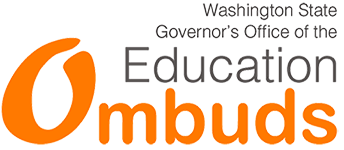Family and community engagement with school = Better outcomes for students
For best practies, see OEO's
- recent report to the Legislature on family and community engagement
- training outline for Powerful Partnerships
- communicating with families with language access needs: tips for educators
Collaborative relationships between educators and family members based on mutual respect, trust, equality and shared goals are predictors of student academic success. Research consistently shows that when educators and families work together, students perform better academically and behaviorally. Attendance improves, behavior concerns decline, and graduation rates rise. Developing shared decision-making with families is not just another program in a school or school district. It is part of the professional practice of educators and the way daily business should be conducted in school buildings and school district offices. It is also part of an institutional value system that recognizes the central role that families play in education. First, before beginning or revisiting the work, however, perform a self-reflection and then a family and community co-design or co-revision of your school's values and vision statement when it comes to dual capacity in supporting students. Look at such issues as whether or not the vision is inclusive, culturally responsive, available in multiple languages, and honoring of the unique and invaluable perspectives that families, schools, and communities all bring to supporting students.
Strategies for Powerful Partnerships
1. Offer student-parent interactive homework. This keeps families connected to the school's goals and participating in their student's education. A good source for interactive homework is Johns Hopkins University's Teachers Involve Parents in Schoolwork. 2. Provide families with home-learning tips connected to the school's academic goals during all school family events such as music/drama student performances, back to school night, open house, school plays, book fairs, family dinners, PTA meetings, etc. 3. Offer family workshops or seminars to explain grade-level academic standards and provide families with examples of the topics being taught in the classroom. 4. Schedule quarterly "Family Day" classroom visits for family members or special adults in children's lives to observe teaching techniques in the classroom. 5. Offer family evening events focusing on learning games and activities directly linked to school goals (math, reading, writing, science, technology). 6. Publish annual academic goals (translated to meet your school community's needs) in the school newsletter, on reader boards, on the website, and in visible places throughout the school year. Create laminated posters and display goals (translated for families in your community) around the school. 7. Inform parents of the school's annual goals and any upcoming planning (e.g., building improvements, leadership opportunities, curricular changes), and send strategies and tips to improve student academic progress in all correspondence and media such as:
- Back-to-school packets
- Report cards
- Progress reports
- School newsletters
- Weekly classroom packets
- Student calendars
- Time-keepers
- PTA newsletters
- Event agendas/programs
- Reader boards
- Bulletin boards
- Auto-caller
- School website
- Parent online information site
- School student newspaper
8. Display student work throughout the school. 9. Recognize and honor that family engagement takes many forms. Many families have time and other constraints that make typical school-day participation or evening participation difficult. Provide multiple channels for involvement rather than only the traditional routes, such as fundraising, PTA, and day-time volunteering in the classroom.
Partnership strategies for elementary school families
- School tours for families
- Grade-level learning packets
- Family visits
- Grade-level parent discussion groups
- Lending libraries
- Family interactive homework
- Parenting workshops or other supports
- Health and nutrition education for parents
- Student-led parent-teacher conferences
- Meetings with school staff and parents
- Creative planning for ways to engage families remotely and in person to celebrate culture, family engagement, and community resources
Partnership strategies for secondary school families
- Family visits
- Family workshops to explain courses, electives, credits, graduation requirements, etc.
- Parent-student-counselor sessions for joint college admissions and career planning
- Student-led parent-teacher conferences
- College and career fairs for families
- Tutors and mentors program for students
- Family classes on puberty, raising teenagers, drug and alcohol prevention/intervention, depression/suicide prevention, etc.
- Creative planning for ways to engage families remotely and in person to celebrate culture, family engagement, and community resources
Add an educational component to family events at school. Here are some examples:
- Back-to-school night – add a guided school building tour for bilingual families
- Family dinner – add family engagement or effective parent-teacher communication workshop OR host it at a local community center or organization where families and students feel comfortable
- Open house – add community resources fair with interpretation and translation
- Curriculum night – add cultural heritage fair potluck
- ELL class presentations – add a workshop on understanding the school system and the various roles in your particular school and district
- Parent-Teacher conference – add student study skills workshop (with interpretation for ELL families)
